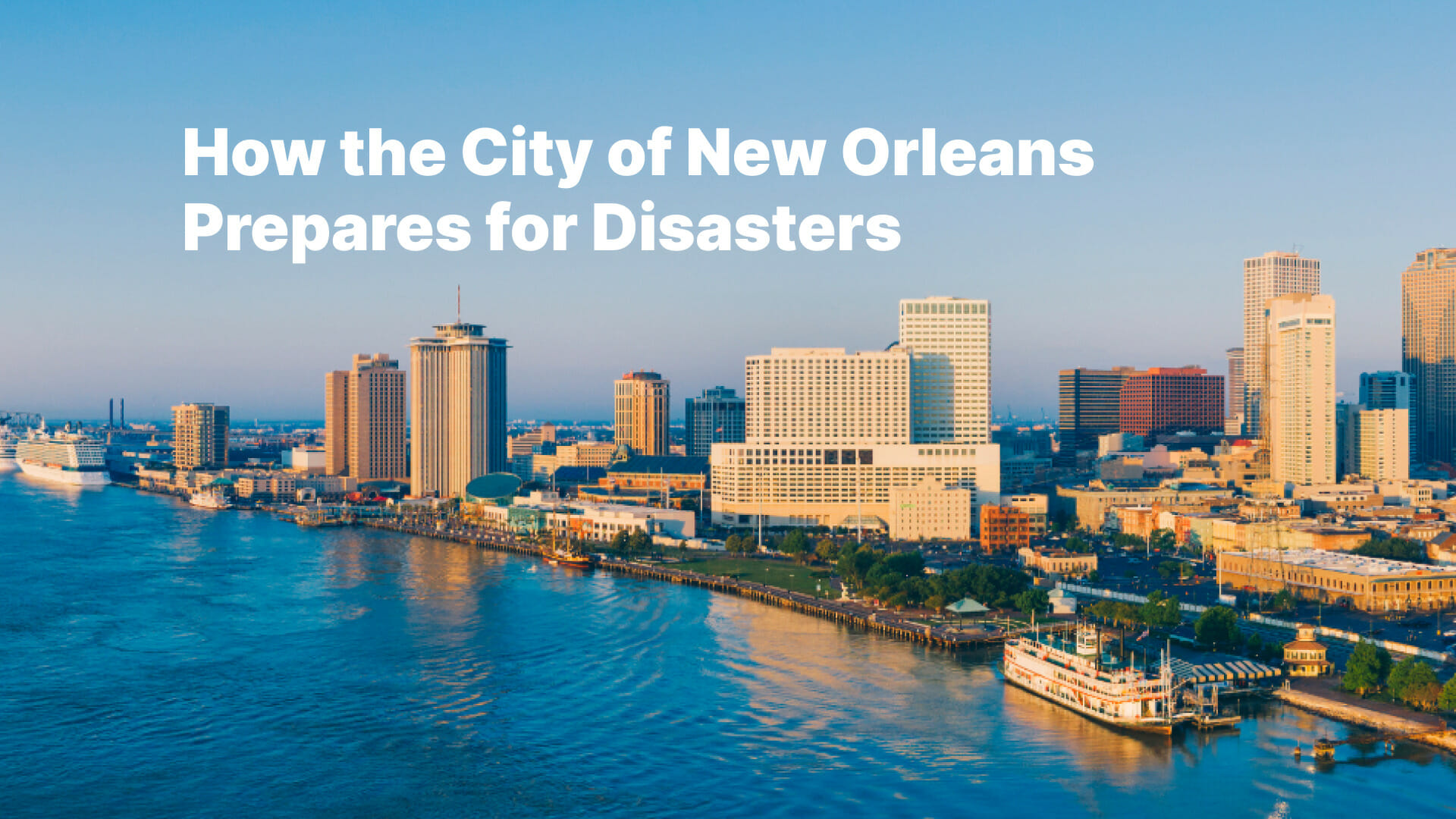How long can your IT systems be out of service without causing major, life-altering ramifications for the people you serve?
The impact of losing data from a natural disaster can be devastating. A company that suffers an information technology (IT) disaster might never fully recover or may take months to recover. In fact, according to a survey by Evolve IP, 93% of companies that lost their data for 10 days or more filed for bankruptcy within one year of the disaster.
For that reason and others, it’s critical that you have a disaster recovery plan for your organization.
The Regular Demands on the City of New Orleans’s IT Department
New Orleans is home to the largest city population in Louisiana. A popular tourist destination, the city nearly bursts at the seams with an influx of revelers during major events such as Mardi Gras and Jazzfest. On top of this, it’s a coastal city that experiences hurricanes nearly every year. In the last four years, the city has declared 19 emergencies.
This can be extremely stressful for the city’s IT department, which strives to provide uninterrupted, mission-critical technology services to public safety teams (law enforcement, fire department, and medical services) and other aspects of local government administration.
“From the recreation parks all the way up to the public safety teams, especially our police and fire in the event of disasters, depend on us for technology services.” –Kim Lagrue, Chief Information Officer, City of New Orleans
Disaster Recovery Is a Non-negotiable
Given the importance of their IT enablement to the city’s public services, and in recognition of challenges inherent in their geography, the IT department focused on optimizing its global disaster solution. Life-supporting applications such as those used by the City of New Orleans’s IT department must always be on. Major disasters are happening more frequently and sporadically. That means admins now have to safeguard their data with the lowest RPO/RTO possible at all times throughout the year.
Kim Lagrue, the City’s Chief Information Officer, notes, “We decided to look at something more integrated, and Pure Storage offered us ActiveDR as part of the solution. It just made so much more sense.”
Catering to such needs, the IT department adopted Pure Storage® ActiveDR™, a standard feature of the Purity Operating Environment that powers Pure FlashArray™ systems. ActiveDR provides global disaster recovery capability without complexity. It maintains application performance with continuous replication and near-zero RPO/RTO.
“For an organization and a city of our size, we’ve never been able to deliver an RPO within hours. However, with ActiveDR, we are now down to about a 48-hour scenario,” said Lagrue.
How the City of New Orleans Executes Their Disaster Recovery Plan
Several factors shaped the City of New Orleans’s strategy and how they execute it.
Preempt and Plan
At the core of every disaster recovery initiative is a disaster recovery plan. Initially, the city’s IT department had a very different disaster recovery procedure and infrastructure set up. When New Orleans was affected by Hurricane Ida in 2021, while admins were responding to a physical threat, their data center caught fire. The team realized that they had to change their disaster recovery strategy because the data center’s location required relocation.
Their strategy shifted from a single on-site data center and disaster recovery to two geographically dispersed (300 miles apart) data centers since most of the disasters are regional, spanning over a hundred miles.
“Network dependencies and latency was the biggest factor in moving data centers for us and that prohibited us from really implementing a good solution. Many solutions don’t tolerate it,” said Lagrue.
Answer the Business Requirement
Anticipation strategies and contingency planning often involve foreseeing possible disasters and careful analysis of the present business environment. This enables stakeholders such as the City of New Orleans’s IT department to devise appropriate responses and testing strategies.
The department is a 24×7 shop because their customers—especially the police and fire departments—are actively working throughout the day and night. It’s eminently important for them to have a scenario where they can test failover actively without disrupting these services.
Due to the 300-mile physical separation of their sites, they needed a solution that could replicate their data in sync by constantly streaming it—fully tolerant of working over a network that produces latency—thereby ensuring that data is always available to them in their secondary data center.
“What has been great is being able to stream continuously with the streaming nature of ActiveDR going from one storage cluster to the other storage cluster due to its tolerance to network delays,” said Lagrue.
Mitigate
The team believes in an “always ready” approach with appropriate responses given the business requirement and unstable nature of the geography. Hence, they perform disaster recovery testing and readying their disaster recovery solutions twice a year—once before the beginning of hurricane season and once after.
Business Impact
Since complex solutions demand more resources and require more staff training, simplicity has been the City of New Orleans’s north star in putting together its disaster recovery solution. Hence, being able to implement a solution quickly and have their staff understand it easily translates into higher workforce efficiency. The idea is to have fewer people involved in disaster recovery, allowing for more focus on other, often more immediately impactful, parts of data center applications.
“We went from months to 48 hours to recover 100 terabytes of data and about 300 virtual server environments and I think we did that in a fraction of the time with ActiveDR compared to the solution that we had before,” said Lagrue.
What Is ActiveDR?
ActiveDR is a continuous, near-real-time, replication solution between two Pure Storage FlashArray systems, either within or across data centers. This allows customers a near-zero RPO of data protection across their business environment with minimal data loss for disaster recovery purposes. These writes are continuous, not synchronous. As a result, there’s no performance impact to the source system or any requirements for low roundtrip latency between data centers.
Get ahead of an unforeseen disaster that can jeopardize your business. Learn more about ActiveDR.
![]()





